iPhone apps for the Biology Teacher
A few months ago, I spent quite a bit of time searching for science related apps that could potentially be useful for my life as a biology teacher. I have downloaded a number and have had the opportunity to discover those that I have found most useful (or potentially useful) in that role.
The main post contains a list of 16 iPhone apps. Each app icon is followed by a brief description and links that may be helpful for you in making a decision on acquiring the app. For those that I have found especially useful, I discuss specific manner(s) it has been used. Furthermore, if you don’t have an iPhone some of the producers of these apps have websites that may be useful as well.
For those unfamiliar with iPhones, these apps must be acquired through the apps store in iTunes so in many cases there are not internet links to pages with further information on these apps. To learn more, download iTunes, and search the app names in the iTunes store, or google search and read what you can find.
Happy app hunting…
Apps for Keeping Abreast of Biology
NPR is a wonderful resource for science related news. This handy app catalogs the most recent science related broadcasts from the diversity of shows that contain such content, from Morning Edition to Science Friday. So, if you, like me, often hear an interesting segment that could be used as a nice springboard for student discussion, but rarely have time to find the show on the NPR website, this app is for you. View the youtube video produced by NPR to introduce the functionality of this app, or read about it at this NPR website.
I have found the “playlist” most helpful in setting aside links to the audio segments that I may share with my students days or months later. So that your playlist doesn’t become to too cumbersome over time, I would suggest searching the NPR website for the show and downloading its audio file for future reference.
Science Friday by Ira Flatow also has its own stand alone app as well if you want to be able to more easily manage
As stated on their website:
TED is a small nonprofit devoted to “Ideas Worth Spreading”. It started in 1984 as a conference bringing together people from the three worlds of Technology, Entertainment, and Design (TED). We believe passionately in the power of ideas to change attitudes, lives and ultimately, the world. So we’re building a clearinghouse that offers free knowledge and inspiration from the world’s most inspired thinkers, and also a community of curious souls to engage with ideas and each other.
This app gives one easy access to their clearinghouse of free knowledge and inspiration, in other words, videos and audios of their famed TED Talks. Although you have to scroll your way through a plethora of non-biological content the content that you will find is worth it. As an example, I recently listened to an 18 minute talk given by Janine Benyus titled Biomimicry in Action where she discussed the new perspective of engineering which is using biology as it starting reference for design and a web portal for examples using this process (even more recently I listened to Craig Venter’s press briefing about his institutes most recent publication – your students would love to take part in this ground-breaking step in synthetic biology). The app convieniently allows you to place interesting content within a “favorites”. To learn more about TED visit their website.
I like to read books, and now with this iPhone app I can easily cut and paste suggetsions from my monthly book review e-mail from the American Scientist into Amazon and save them to my “wish list” or purchase them out right with a few thumb clicks. This app displays a trimmed down version of the website (it is actually less distracting) with a search window and a few recommendations. Once you have found your book of choice, you can view a product description, professional reviews, and customer reviews and ratings as at the Amazon website.
As stated on their website:
MicrobeWorld brings you the latest audio, video, and news content in microbiology, biotechnology, and life sciences from the American Society for Microbiology. This multimedia application delivers content and news items from the following sources.
“Meet the Scientist” podcast with the renowned author Carl Zimmer
“This Week in Virology (TWiV)” podcast from Columbia Universiy
“This Week in Parasitism (TWiP)” podcast
“MicrobeWorld” video podcasts
“Microbe”, the ASM’s News Magazine in pdf format
This app is a more recent acquisition of mine, but being a fan of Carl Zimmer and familiar with the multitude of resources available via the ASM website, I figured that I would forgoe the cost and support the society with my purchase. As an example of the content you can find, I recently listened to the most recent podcast of Carl Zimmer’s Meet the Scientist where he interviewed of John Wooley, Associate Vice Chancellor of Research and Professor of Chemistry-Biochemistry and of Pharmacology at UC San Diego, about the emerging field of Metagenomics.
I have more recently begun to listen to TWiP and TWiV in the evening or on a lazy Sunday morning. These podcasts by Vincent Rancaniello and Dick Despommier from Columbia University are excellent for personal professional development. Listen yourself and you’ll see why.
I mention this because it could be a useful way for you to by-pass your school’s restrictions. I guess you would need a phone projector to share with your students though.
Teaching Resources Apps for in the Field
The Google Earth app is an iPhone version of the software that one can download to view the geography, etc… of the Earth. View the YouTube video produced by Google to introduce the functionality of this app. I often introduce my Field Biology and Zoology students to field sites that we plan on visiting via Google Earth on my computer. Using the sofware gives them a frame of reference and feel for the topography and type of biological communities (whether prairie, forest, or aquatic) at the site. Now, I can imagine supporting their initial visual introducting to a site through use of this app when we arrive at our destintations as well.
You could even teach your students about cases in which Google Earth images have helped scientists to discover new biological phenomena.
Weather Bug is a standard weather app that, once configured for a particular location(s), provides a user with information on the “Current Conditions”, a seven-day “Forecast”, a “Map”, “Video” forecast, and “Camera” image of the weather. If the National Weather Service has given any warnings, etc… the warning and associated details are posted through the app. In preparation for this comment, I have just realized that one can view the map as radar, visiable satellite, or infrared satellite as well. You can even e-mail information to someone else via the app.
I have found this app helpful when trying to make decisions regarding a pending field trips. Being able to view the radar map as a video over the past hour has helped me to figure out the speed at which weather is approaching, the relative severity of cells in the vicinity, and even predict if there is an expected break in the weather between cells.
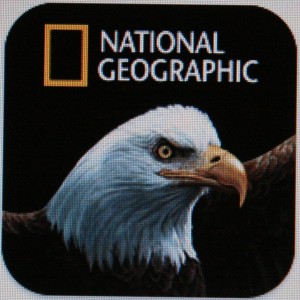 National Geographic Handled Birds ($14.99)
National Geographic Handled Birds ($14.99)
National Geographics Handheld Birds is the most expensive app that I purchased but I figured that it might help me to become more competent identifying calls. I have always felt sad for my students, who unlike myself, haven’t had access to a teacher that can impress and inspire students with knowledge of calls. This app can’t replace a knowledgeable birder for sure but it should help me out.
The app contains content on 867 species of North American birds that is downloaded onto the iPhone so your are not at the mersy of having a network connection at the time of use. The list of birds can be organized by first name, last name, taxonomically like many current field guides, or by family alphabetically. There is also a search function but I must add that this is not always useful unless you know the first name in a multi-word name of bird. For example if one searches ‘cardinal’ or ‘mockingbird’, the search will come back with no results but if you know that they are both ‘northern’ species you would find the entry quite quickly. In general, I also find all the scrolling one has to do a bit cumbersome.
Once you have choosen a particular species of bird to view the page displays images like those found in the paper copy of their field guide, below which is found a button to play their call. Beneath the image are Media links that include ‘images’ and ‘audio’, and Description links that include ‘overview’, ‘appearance’, ‘range’, ‘sounds’, and ‘behavior’. These links contain much information including lists of similar looking and sounding species. Within the audio link, one can increase the volume of the call playback beyond the range of the iPhone volume controls. I could easily see that this could be useful in helping students learn the calls of birds, to quiz them in the classroom or in the field, and possibly for even attracting birds for closer identification.
For National Geographic’s description of their product download the following pdf: http://www.handheldbirds.com/HandheldBirds_iPhoneGuide.pdf
The Encylopedia of Life is a website that EO Wilson inspired with the statement “Imagine an electronic page for each species of organism on Earth…” made in at a TED conference lecture a number of years ago. This EOL app allows one to upload images of organisms that were observed in the field, taken with one’s phone, and to associate your specific location, using the phones internal GPS, with that observation. In this manner, teachers and students can become citizen scientists helping to develop a database of the specific locations of species throughout the world. To make the app functional, one has to setup yahoo and flicker accounts (flicker is owned by yahoo), and when opening the app for the first time, one must associate the EOL app with those accounts. It is a pretty user friendly process.
For an example of its use, I think that once someone identifies Brad’s photos of mammal tracks in the snow, his images, however crude would make a nice addition to the page for that species. I have already spent time online search for images that would he me in the identification and have realized that I am going to have to pick up a book to find the answer. If Brad uploads those images, and other like minded individuals did the same, someday the EOL site could use those images in developing a nice key for identification of mammal tracks in snow. In fact, I could imagine a nice class project where students collect images with such a future goal in mind.
The Pano app allow one to easily generate panorama images through providing an easy means of taking multiple overlapping images that the software will stitch together into a single image. After opening the app one takes a picture using the built in iPhone camera. Then, after accepting the image the app creates a tranparent sliver of that image on the left hand side of the screen that you can use to align the next image that you take. Once you have taken all the images for the panorama scene, you can select to merge the images into a single image. Being a camera phone these images are not of high resolution but it could help you document an entire scene in a simple manner. I was only disappointed by the fact that it can’t stitch full 360 degree panoramas.
Teaching Resource Apps for the Classroom and Lab
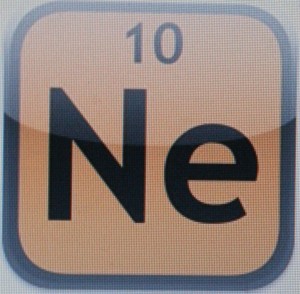 The Chemical Touch: Lite Edition (free)
The Chemical Touch: Lite Edition (free)
The Chemical Touch (TCT) is one of a number of Periodic Table apps available. I haven’t taken the time to download all of them to compare them and proabably chose this one because is was recommended on some website and is free. This app provides information on the standard information found on basic period tables inlcuding the name, symbol, and atomic number and mass of each element. It also contains information on the density, melting point, boiling point, electronegativity for each in a color coded manner that allows one to easily see patterns among the elements. Similarly, one can view information on the specific heat, heat of fusion and vaporization, and atomic and covalent radii.
For the designer’s description of the app visit: http://openscience.org/~chrisfen/Pages/Programs/theChemicalTouch.html
Molecules is a simple app for viewing three-dimensional renderings of molecules and manipulating them using your fingers. The app comes pre-loaded with a DNA model, Acetylcholinesterase, insulin, and the Phenylalanine tRNA. The app also provides a simple means of downloading other molecules (pdb files) from the RCSB Protein Data Bank or some other database of your choosing. Besides allowing one to rotate and zoom in and out of the rendering, one can also change the visualization mode (spacefilling, cylinders, and ball-and-stick) after double tapping on the molecule. Sadly, it doesn’t have the functionality of freeware like RasMol but it could provide a nice means for those iPhone and iTouch users to become introduced to the protein data bank and molecular visualization.
The Convert app is a wonderfully, easy to use, app for making conversions of all types. Besides the more common convertions in length, temperature, volume, and time, this app also allows conversions in angle, area, computer (bytes, etc…), currency, energy, force, power, pressure, speed, typography (pixels, etc…), and weight. It also contains a calculator. Within any choosen convertions one scrolls two column to chose the unit one is converting from and to. Once, you have chosen your units of conversion, you type in the value for the given unit and the app instentaeously converts and displays the needed conversion.
I currently happen to be one of those biology teachers that infrequently prepares solutions (this will change next year). When I do, I always check and double check my calculations, and often triple check myself by asking a local chemistry teacher if my logic is correct. Well, this app from mekentosj.com allows one to quickly calculate the mass, molarity, or volume of a solution from values for the molecular weight, and mass, molarity, or volume that you type in. The app also provides access to an online database of chemical information and allows you to save information on chemicals that you commonly use. Learn more at the Solutions website.
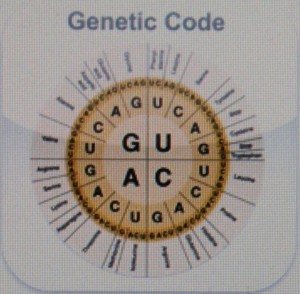 Genetic Code (free) and Genetic Code Pro ($0.99)
Genetic Code (free) and Genetic Code Pro ($0.99)
The Genetic Code app is a simple app that contains both a traditional table of the genetic code as well as the circular shaped code in the app icon above. It also contains a picker for you to choose from the 20 amino acids. Once chosen the app displays the structure of the amino acid which, when tapped, gives you more information on the amino acid including its name, three letter and single letter abbreviations, codons, polarity, side chain formula, side chain charge, type of compound, whether it is essential or not, its relative size, molecular weight, hydropathy, isoelectric point, and pK values. From the descriptions on iTunes, it is difficult to determine any difference between the free and the pro versions of this app.
The 3D Brain is a companion app to a portion of the Genes to Cognition website created by the Dolan DNA Learning Center at Cold Springs Harbor Laboratories. As stated on the app:
The 3D Brain consists of 29 interactive structures that can be rotated in 3D space. Each structure contains information on associated functions, disorders, brain damage, case studies, and links to contemporary modern research.
This app could be handy visual supplement for student self-review of brain structure and function in the diversity of courses the introduce students to such topics.
Apps for Keeping in Touch with Students
Besides the more traditional use of Facebook as a means of connecting ‘friends”, Facebook provides a means of maintaining social networks that you have developed in the course of your teaching. As a rule, I don’t befriend any of my current students or previous students but Facebook provides a means of creating Groups that can facilitate communication without having to become “friends”.
Thus, instead of befriending students, I have created a couple of distinct groups that my students or previous students can request to join. One is for my ex-AP Biology students and the other is for my current Environmental Club. In either case, groups help to maintain an appropriate virtual distance between the facebook worlds of student and teacher, while taking advantage of the commucations revolution that is social networking. Specifically, I have used my Environmental Club group to arrange student community service, and have polled previous AP-Biology students to gain important feedback.
It is a bit cumbersome to communicate the initial launching of a group without becoming friends but it can be done (if you choose to do this – contact me for some more tips – since I got blocked from facebook messaging for a while), and once it is up and running your students will actually help spread the word to those that haven’t joined.
If you have any app suggestions of your own, please take the time to share them too!
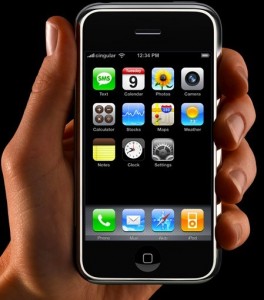


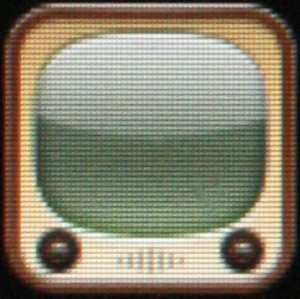

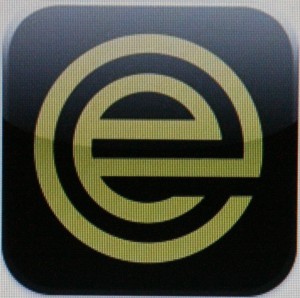
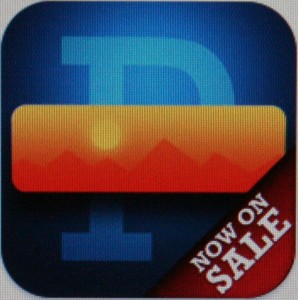
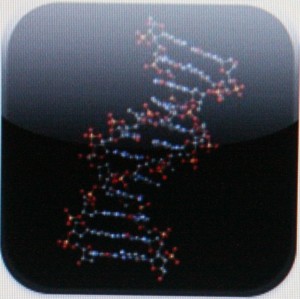


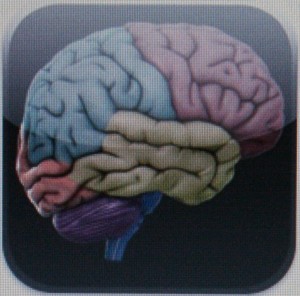

Eric,
Thanks, I got some good ideas. However I don’t have an iPod, but I do have a phone that has aps. I just need to look more so that I can find some on the same caliber as yours.
Pat
I am glad that you added that information regarding the Android. These apps are also available for the iTouch which many students already have and could bring to class, and I agree that it would be enjoyable to find ways to use the iPad in an educational setting.
If you want to play with molecules in class though, I would just use a standard desktop and access the Protein Data Bank (you can visualize molecules in all sorts of manners there). If you want to do something more thought provoking for the student, play around with the freeware RasMol (I need to do a post on it sometime) where students can students can maniuplate aspects of the molecules with a variety of commands. Check out the resources at 3D Molecular Design housed at the Milwaukee School of Engineering. They have a great summer course for teachers as well.
Finally, I often project google earth for a big screen view. I think the sense of touch with the iPad is something to experience though, flipping across the landscape, etc… is pretty cool!
I don’t have an iPhone, but I know that several of those apps’ equivalents are on the Android OS. In addition, this list of apps could lend some credence to obtaining an iPad for a classroom or to share within a department. Specifically, the Molecules app and Google Earth app would be excellent on a larger screen.